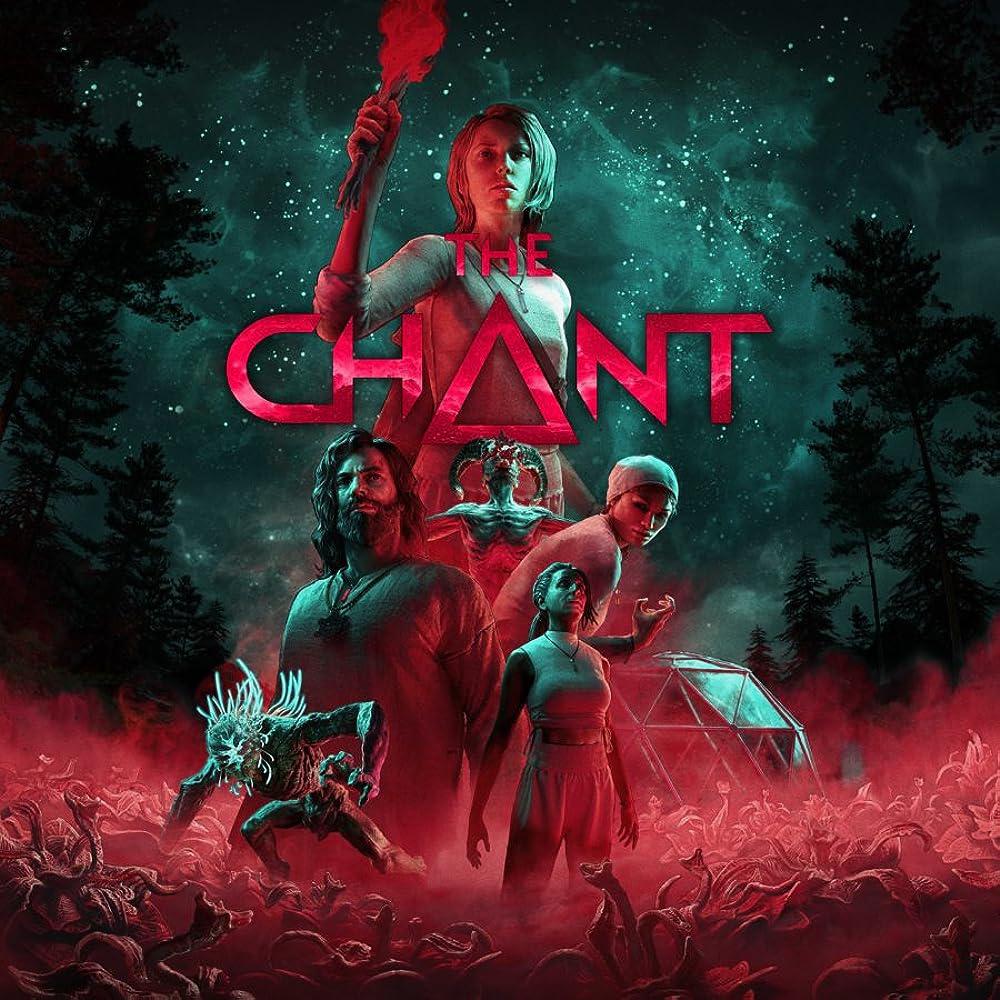
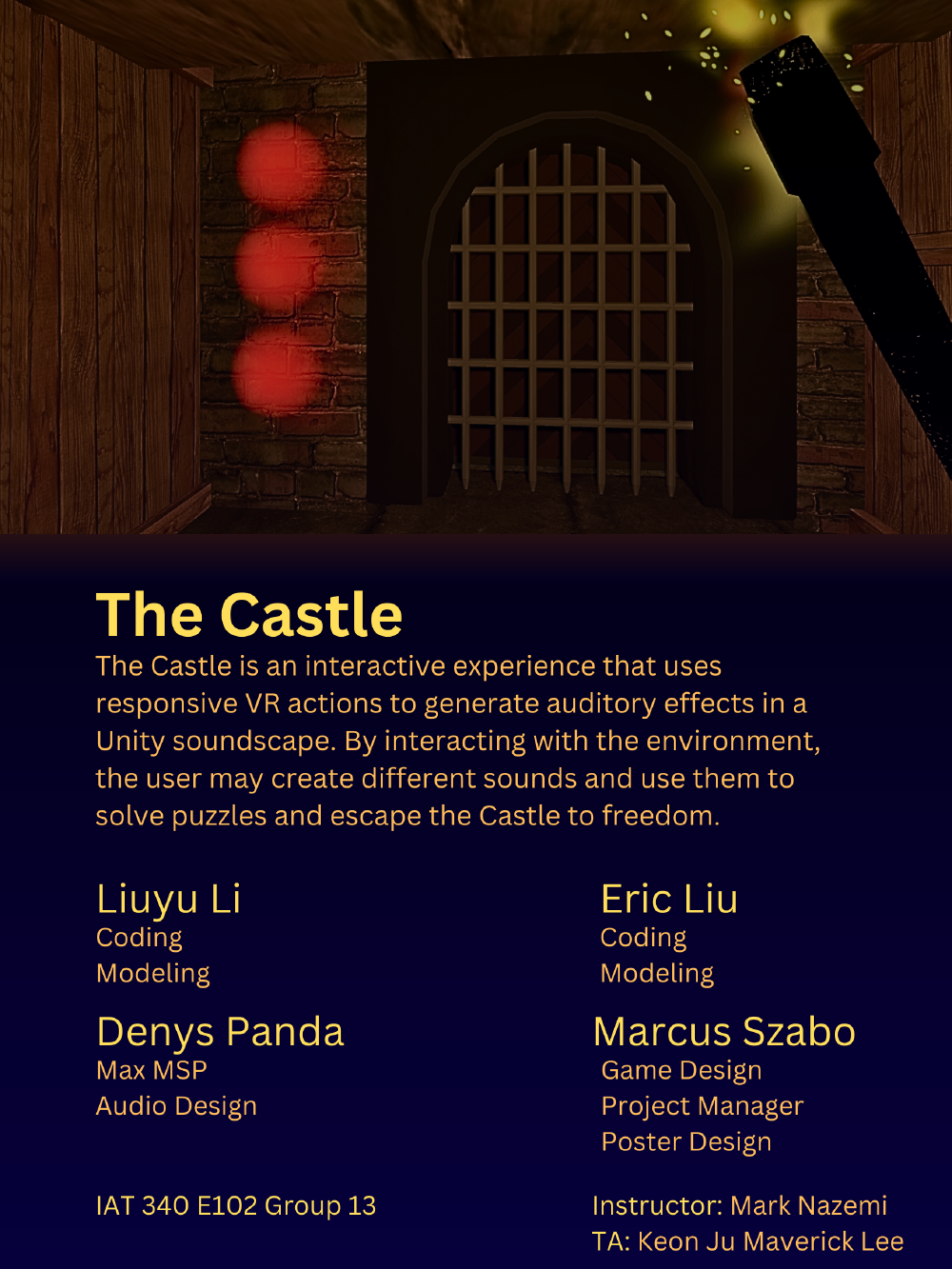
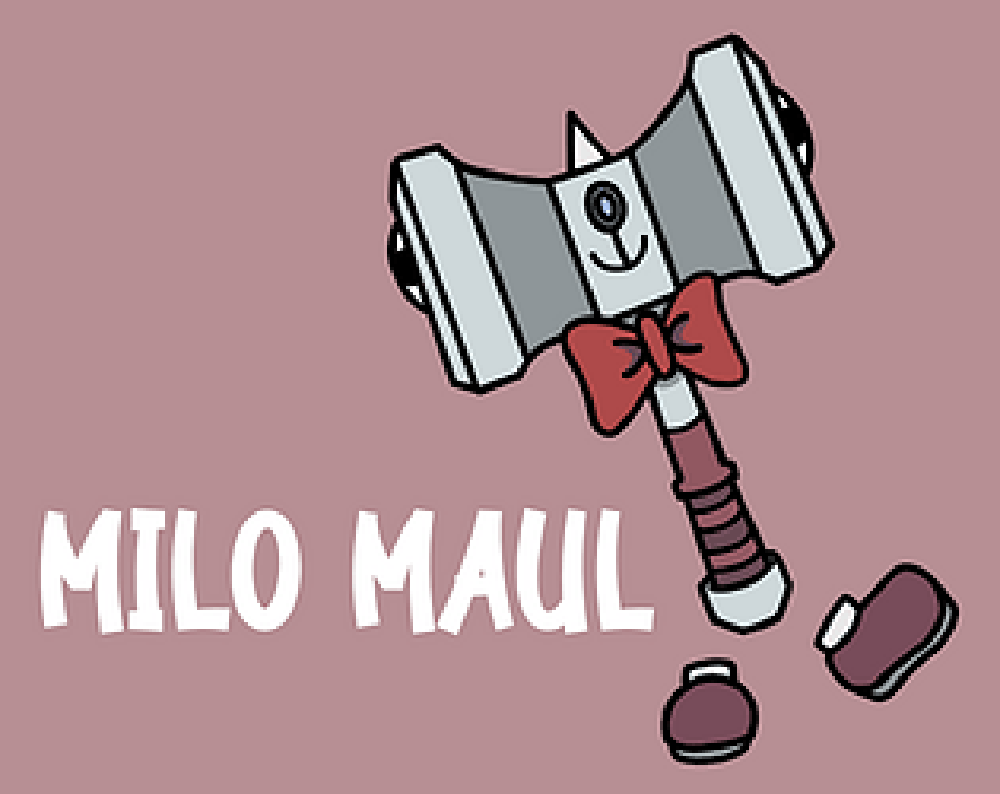
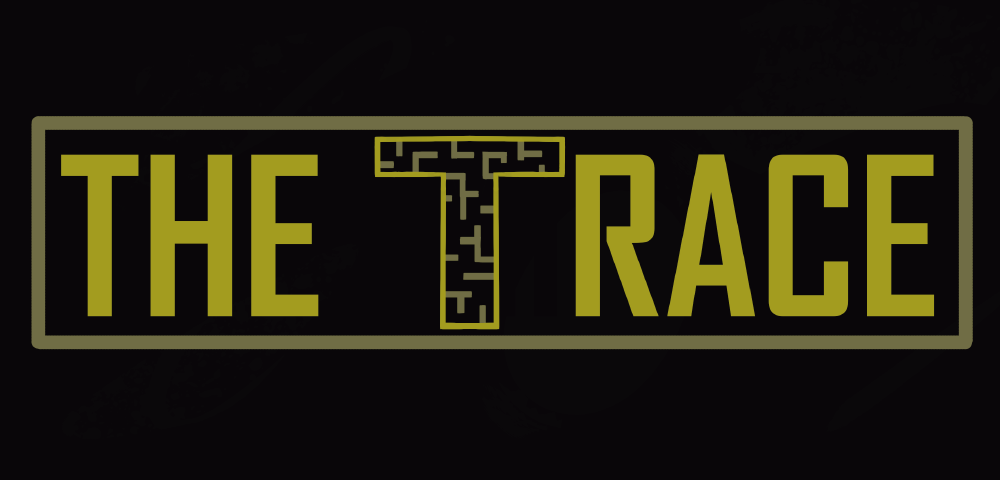
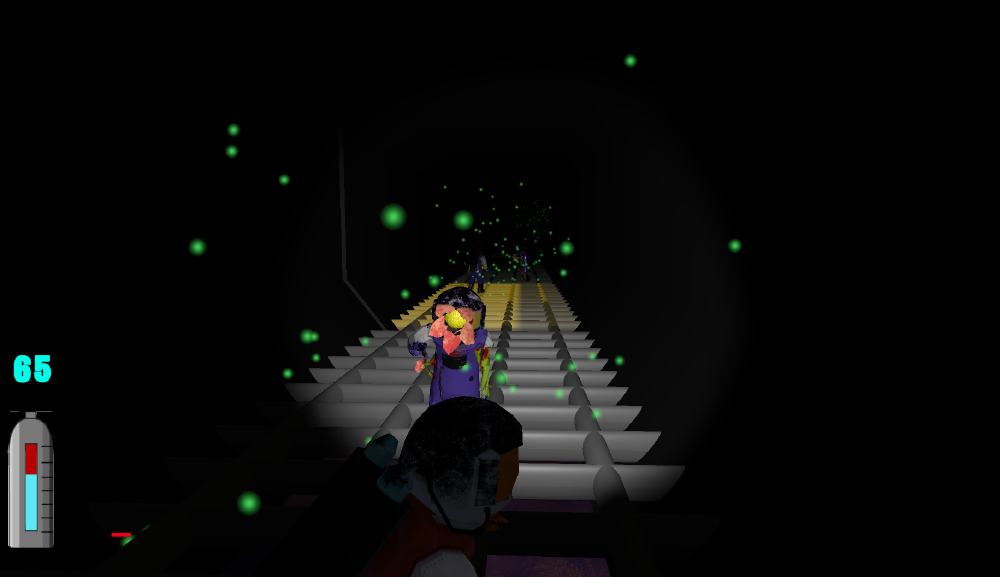










A psychedelic survival horror game that focuses on a ritual gone wrong during a spiritual retreat. Published by Prime Matter and developed by Brass Token. My role on this project was working as a Game Designer.
While a part of this project, I had a hand in a lot of different aspects of the game and had many jobs I was given lead on. I designed the layout, function, and puzzles of some key locations in the game as well as some side areas such as the Commune Farm, the Wretcher Arena, and the Saw Mill. My goal and focus was to create engaging designs that allowed for multiple routes for the player to travel, creating a more dynamic landscape and experience for the player. I wanted players to feel as though their exploration of the world was rewarded, but also experience different encounters or challenges based on the routes they take. Additionally, I designed locations and events that used environmental storytelling to pique the player’s interest in the background story and history of the island and its inhabitants. Helping design lore notes that would offer hints to items or resources while also coming across as genuine and diegetic or using objects and the environment to allow the player to recreate the events that took place in their imagination.
I designed some encounters in the game and was one of the main editors of enemy pathing. This allowed me to create unique challenges and fights that would combine different enemies and skill sets to pose distinctive challenges, both challenging the player and encouraging different lines of thinking or weighing the risk/reward of certain encounters. This posed an interesting challenge to me as I had to plan out routes enemies would naturally take, ambushes that made sense but weren’t always predictable, and the different parameters that dictated when an enemy would continue the chase and when they would return to their original paths.
I was placed in charge of streaming levels and collision implementation throughout the entire game. This was a large responsibility as it required me to take many other considerations into account such as optimization, enemy pathing, how the camera interacts with the environment, as well as creating a playable space where the world seamlessly streams in and out outside of the user’s view.
Outside of organization and desgin, I also assisted with some motion capture for the main character and the Ram Cultist enemy. With previous experience in acting work, I loved the chance to embody some of the characters that I was working with and be a part of the design process in multiple aspects. I recorded multiple attacking and idle animations for Jess as well as all the animations that you see from the Ram Cultists throughout the game. It was a fun chance to be able to do this work, then go into the editor and say “Alright, I’ll put down 3 of me here, and one of this enemy”.
Being able to work on this game was monumental learning experience for me. It offered the chance to work with an amazing group of skilled designers who helped me and mentored me develop many of the skills. It allowed for a unique opportunity to collaborate on ideas and build off each other’s ideas to create a more engaging experience.
I gained experience developing spaces and environments that could offer more opportunities for the player to interact or define their own experience. I learned more about how to grab a player’s attention and help direct them around an environment using the environment itself, items and resources, or using enemies to guide the player through a level. My technical skills in Unreal Engine allowed me to learn and improve my work in blueprinting events, dialogue, enemy encounters, and progression work. This allowed me to contribute further to the project has opened up new avenues in my own work.
A foddian style puzzle platformer where the user plays as a sentient Maul trying to go about its day. The goal of the game is to travel to your store and open up for the day while avoiding breaking anything and helping people along the way. This project took place over the spawn of two weeks. A team of me and 3 others created a group to compete in a Game Jam where the goal was to create a game with the theme “You are the Weapon”.
In Milo Maul, my primary focus was leading in Level Design. I drew out blueprints and all the moving components that I would need in order to create a fun and engaging platformer, incorporating the unique top heavy balancing system we created for the game. This posed an interesting challenge to my designs and layouts because even simple puzzles and tasks could be made strenuous due to the unstable nature of the character model. This forced me to take a different approach to the design, carefully balancing difficulty so as not to step over into tediousness.
My secondary work involved using Blender and Unity’s in-game engine for creating a number of assets for the game’s environment to populate the world. The goal was to create a keep the world’s aesthetic in mind while working on assets, allowing for a more simple polygonal design outlook. The difficulty in the work came from making sure that the assets would shatter into multiple pieces when the object was hit.
Lastly, I created the Design Document that allowed us to summarize our project. It details the different aspects of the game so that a reader is able to understand the basics of the game at a glance.
I don’t usually work in Unity, so working on this game was a good refresher of the engine and how it functions in comparison to Unreal Engine. I greatly enjoyed the challenge of factoring in the character’s unstable nature into the design and fine tuning the different aspects of the map to compliment the balancing mechanic. Creating puzzles that could be solved with enough experience but still posed a challenge was a unique test that I was happy to work through. The time constraint also created a factor of “what level designs are feasible for me to create and build out and what designs are pushing my time window too far” which I was welcome to work through.
As a fan of spy and heist movies, I always enjoyed the trope of one person giving information to the person executing the mission. For this project, I wanted to design a Co-op puzzle game that has two players collaborate and communicate with each other to complete puzzles and perform heists. But with every good spy movie, there’s always a twist. In “The Trace”, two players are trying to rob museums and banks by solving puzzle modules and escape with their bagged artifacts. But some of those artifacts have the chance to be haunted, and will plague the characters throughout their playthrough, affecting each player differently based on whether they are the “Intel” or the “Agent”.
In the game, the two players can choose to either be: The Intel, sitting in an RV in charge of reading through manuals, catalogues, and blueprints; or The Agent, physically in the building following the steps provided by the Intel, disarming traps and avoiding capture. Each time the players load into a map, the game will randomly generate a layout and fill it with artifacts to steal and random puzzle modules for the players to solve, all within a given time limit. Each player must deal with their own challenges while helping each other such as hiding from roaming security guards, police checking the RV, or rival treasure hunters trying to find you. Additional threats to the characters come in the form of different entities, the type of entity being decided once the player steals a specific type of artifact. These new threats will take on different shapes and present different challenges to the player by creating new enemies, changing the environment, or generating new requirements the players need to stay aware of to stay alive.
Whenever I start a project, I set goals and skills for me to achieve and learn in order to become better. For this project, I wanted to learn how to implement random generation in environment and objects, I wanted to incorporate VR, and I wanted to learn more about incorporating Cooperative play. These are each a particular challenge as they will challenge my technical skills in Unreal Engine Blueprinting, and force me to create designs and layouts that I’m not as familiar with.
In many cooperative games or puzzle games, its really fun to play through the first time but can quickly become repetitive. This is something I wanted to work around by implementing random generation to make each map and experience as unique as possible, even down to the types of threats the players come across. This allows for players to be able to play for far more time without much repetition, and will still offer challenges as they continue to play. While I designed the random generation of level and puzzle “modules” and have them building off each other or in the correct spaces (as seen in the photo above). My current difficulty is creating more control over the generation to limit certain parameters while it is building.
VR is always something I’ve been interested in and I love the immersive feeling it brings to video games. It requires similar methods of design to base levels and games around, but also requires new considerations such as movement, more complex interactivity, and a deeper understanding of atmosphere. This allows for the opportunity to learn a new set of skills as well as a new perspective to view level design from.
Part of many good psychological horrors is the doubt of what is real and what is being imagined. In this project, “WYRD”, I take inspiration from “Alice in Wonderland” and Celtic Myths of the Fae realm, making use of the bizarre and twisted nature of an “otherworldly” realm. In WYRD, a ex-detective follows a series of clues involving their lost sister, leading them to an old manor in the outskirts of an old city. As they explore the woods leading up to the building, the player disturbs a rock circle, creating a series of events that lead to them falling down a tunnel of dirt and rock, eventually coming across the old manor. While there, strange events and scenes in the house put the character’s sanity into question, in an attempt to ascertain what memories they retain are truth, and what memories have been warped by the creatures that dwell there.
The project would make use of an “iteration” playstyle, where the player travels through the same location multiple times, with new changes occurring throughout each iteration. These changes could be new threats and enemies, new locations being unlocked, scenery changes, or even experiencing different perspectives of previous events. Each iteration concurrently happening after falling down a tunnel, therefore delving deeper down “the rabbit hole”. My vision is to implement a “memory” system, where the player must discover falsehoods in their memories in a puzzle-esque style, while also figuring out which memories to relinquish to the Fae creatures in order to save the character’s sister. As certain memories change or are lost, the story branches into different directions and create different experiences for the player as they explore the manor grounds.
My ultimate goal for this project is to create an intriguing story that allows can branch off in different directions, creating new events or dialogue directly relating to the player’s choices. Focusing less on the technical aspects of the engine and putting more time into not only the asset art and models, but also the art of level design. I need to create a world that is able to direct the player around in a fluid, diegetic manner, while also giving them information about the world through environmental storytelling. Similarly, I want to create a puzzle mechanic that is relatively simple to create, but still engages the player in a narrative and unique way, creating another avenue of story engagement by having the player recall certain aspects of information they’ve heard previously and comparing it to the memory they see at that moment.
I wanted to subvert the common horror tropes of jump scares and loud noises by being more subtle, creating situations or cutscenes where the “danger” is in the background, partially hidden, and never fully in frame. This would create situations where player might question whether they saw something or not, but still instill that skin-crawling feeling that something is very wrong. This led to ideas like hiding something in the rear view mirror of a car, seeing someone briefly grabbing your arm in the reflection of a window, seeing someone watching you from a window but then fading away before you can look again. The difficulty with implementing this effectively is to balance how hidden or how obvious it is. If its too subtle, most players would likely miss it and it would lose the impact. However, if it were too obvious and “in your face”, the idea would fall into the category of common tropes I’m trying to avoid. The other thing to keep in mind is the frequency of these events, too many will overpopulate the horror and start to normalize it, but if they’re too spread out then the tension in the player dissipates before the next big event. To take these into acccount, I planned out several key events and locations within the Manor for testing, with the plan to gauge how much tension each event creates, and spread them out evenly before each key scare.
Invasive is the final project in the IAT 410 Advanced Game Design class. The final project was designed using Unreal Engine and all of the assets and character/enemy models in the game was designed using Maya. Invasive was designed as a Horror Puzzle game where the player must explore a space station that has been overrun by sentient plant life that is attempting to hamper or kill the player.
During this project I was the acting project manager, assisted in game design, and was the main artist on the project in terms of 3D modeling. I designed the characters, enemies and boss in the game as well as designing the assets. I created animations for the character’s, enemy’s, and boss’s “Idle” and “Active” states. I also created basic puzzles for the game that requires manipulation of the environment, enemies, and throwable objects in order to solve the puzzles and progress.
While we were creating the game, we wanted to take a different approach with a typical horror game. In most games, the player wants to avoid the enemies as much as possible. However, in this experience we created enemies that were integral to the player’s survival. As the player had a limited amount of oxygen at their disposal, they had to remain relatively close to certain enemies or objects in the world while they explored. The player was also able to interact with the environment by throwing certain objects to distract enemies and sneak by them as needed.
As a part of wanting to flex my capabilities in Maya and Animating, I wanted to help create an environment that held the aesthetic of the world, while also creating an engaging world the player can explore. I built out nearly every asset in the game including enemies, the player, objects, and the boss enemy, as well as creating the appropriate animations for them.
As the organizer and team lead for the project, I created schedules and guidelines for us to keep to as well as setting up a shared workspace for everyone to show their work and collaborate in.
You can download the Design Document for the game here
The Castle is an interactive soundscape based VR game where the user must use the environment to create unique sounds in order to solve puzzles. This was the final project for our IAT 340 Sound Design course based in Unity and the audio was connected using MAX MSP. The Castle places the character in a locked castle, and must create specific sounds using objects around the level, with each object and environment piece having a unique combination of noises depending on the object hitting and the object being hit.
In this project, I took charge of Project Management to help guide the group, keep everyone on track, and make sure that we were making reasonable and feasible design decisions. I designed the level, layout, and set up the VR structure. This project was a unique challenge as it took a new software and allowed us to find unique ways to connect it to the Unity base.